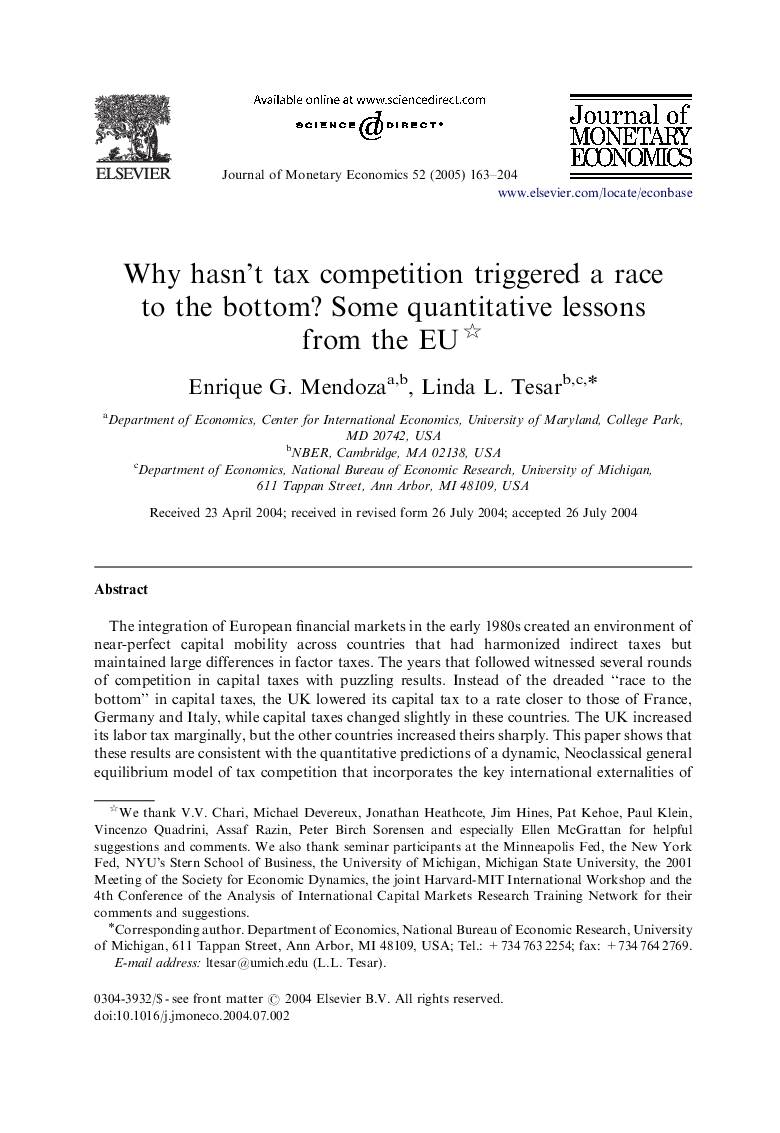| کد مقاله | کد نشریه | سال انتشار | مقاله انگلیسی | نسخه تمام متن |
|---|---|---|---|---|
| 10478512 | 931133 | 2005 | 42 صفحه PDF | دانلود رایگان |
عنوان انگلیسی مقاله ISI
Why hasn't tax competition triggered a race to the bottom? Some quantitative lessons from the EU
دانلود مقاله + سفارش ترجمه
دانلود مقاله ISI انگلیسی
رایگان برای ایرانیان
کلمات کلیدی
موضوعات مرتبط
علوم انسانی و اجتماعی
اقتصاد، اقتصادسنجی و امور مالی
اقتصاد و اقتصادسنجی
پیش نمایش صفحه اول مقاله

چکیده انگلیسی
The integration of European financial markets in the early 1980s created an environment of near-perfect capital mobility across countries that had harmonized indirect taxes but maintained large differences in factor taxes. The years that followed witnessed several rounds of competition in capital taxes with puzzling results. Instead of the dreaded “race to the bottom” in capital taxes, the UK lowered its capital tax to a rate closer to those of France, Germany and Italy, while capital taxes changed slightly in these countries. The UK increased its labor tax marginally, but the other countries increased theirs sharply. This paper shows that these results are consistent with the quantitative predictions of a dynamic, Neoclassical general equilibrium model of tax competition that incorporates the key international externalities of tax policy operating via relative prices, wealth distribution and fiscal solvency. Tax competition is modeled as a one-shot game over time-invariant capital taxes with dynamic payoffs relative to a status quo calibrated to European data. The calibration is preceded by an empirical analysis that shows that the relationship linking taxes to labor supply and the investment rate in the model are in line with empirical evidence and that domestic taxes seem to respond to foreign taxes. The solutions of the games show that when countries compete over capital taxes adjusting labor taxes to maintain fiscal solvency, there is no race to the bottom and the Nash equilibrium is close to observed taxes. In contrast, if consumption taxes adjust to maintain fiscal solvency, competition over capital taxes triggers a “race to the bottom,” but this outcome entails large welfare gains. Surprisingly, the gains from coordination are small in all of these experiments.
ناشر
Database: Elsevier - ScienceDirect (ساینس دایرکت)
Journal: Journal of Monetary Economics - Volume 52, Issue 1, January 2005, Pages 163-204
Journal: Journal of Monetary Economics - Volume 52, Issue 1, January 2005, Pages 163-204
نویسندگان
Enrique G. Mendoza, Linda L. Tesar,